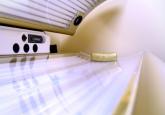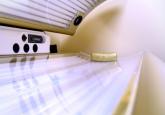Article

Dr. Nergard-Martin was from and Dr. Solomon is from the College of Medicine, University of Central Florida, Orlando. Dr. Nergard-Martin currently is from the Department of Internal Medicine, Baylor College of Medicine, Houston. Dr. Solomon also is from Ameriderm Research, Ormond Beach, Florida, and the College of Medicine, University of Illinois, Urbana. Drs. Caldwell and Dellavalle are from the Department of Dermatology, University of Colorado Anschutz Medical Campus, Aurora.
Dr. Dellavalle also is from the Dermatology Service, US Department of Veterans Affairs, Washington, DC; Eastern Colorado Health Care System, Denver; and the Department of Epidemiology, Colorado School of Public Health, Aurora. Dr. Barr is from Cedars-Sinai Medical Center, Los Angeles, California.
The authors report no conflict of interest.
Dr. Dellavalle is employed by the US Department of Veterans Affairs. Any opinions expressed in this paper do not officially represent any positions of the US government.
The eTable is available in the Appendix in the PDF.
Correspondence: Jennifer Nergard-Martin, MD, 1911 Holcombe Blvd, Houston, TX 77030 (jcnergard@knights.ucf.edu).

A new US Food and Drug Administration (FDA) regulation classified tanning beds as class II, requiring indoor tanning facilities to inform users of the risk of skin cancer in efforts to reverse the growing trend in indoor tanning. However, little is known from the patient’s perspective on whether knowledge of the risk of skin cancer development is a deterrent to indoor tanning. There also is conflicting literature regarding the relationship among frequency of indoor tanning, age at onset of melanoma diagnosis, and characteristics of diagnosis in melanoma patients with a history of indoor tanning. An international survey was conducted in patients 18 years and older who self-reported being diagnosed with melanoma after indoor tanning. The purpose of this study was to investigate the patients’ perspective on indoor-tanning behaviors as associated with the severity of their melanomas and the time frame in which they were diagnosed as well as their perceived views on the safety of indoor tanning and the frequency in which they continue to tan indoors.
Practice Points
The incidence of melanoma is increasing at a rate greater than any other cancer,1 possibly due to the increasing use of indoor tanning devices. These devices emit unnaturally high levels of UVA and low levels of UVA and UVB rays.2 The risks of using these devices include increased incidence of melanoma (3438 cases attributed to indoor tanning in 2008) and keratinocytes cancer (increased risk of squamous cell carcinoma by 67% and basal cell carcinoma by 29%), severe sunburns (61.1% of female users and 44.6% of male users have reported sunburns), and aggravation of underlying disorders such as systemic lupus erythematosus.3-5
The literature varies in its explanation of how indoor tanning increases the risk of developing melanoma. Some authors suggest it is due to increased frequency of use, duration of sessions, and years of using tanning devices.1,6 Others suggest the increased cancer risk is the result of starting to tan at an earlier age.2,3,6-10 There is conflicting literature on the level of increased risk of melanoma in those who tan indoors at a young age (<35 years). Although the estimated rate of increased skin cancer risk varies, with rates up to 75% compared to nonusers, nearly all sources support an increased rate.6 Despite the growing body of knowledge that indoor tanning is dangerous, as well as the academic publication of these risks (eg, carcinogenesis, short-term and long-term eye injury, burns, UV sensitivity when combined with certain medications), teenagers in the United States and affluent countries appear to disregard the risks of tanning.11
Tanning companies have promoted the misconception that only UVB rays cause cell damage and UVA rays, which the devices emit, result in “damage-free” or “safe” tans.2,3 Until 2013, indoor tanning devices were classified by the US Food and Drug Administration (FDA) as class I, indicating that they are safe in terms of electrical shock. Many indoor tanning facilities have promoted the FDA “safe” label without clarifying that the safety indications only referred to electrical-shock potential. Nonetheless, it is known now that these devices, which emit high UVA and low UVB rays, promote melanoma, nonmelanoma skin cancers, and severe sunburns, as well as aggravate existing conditions (eg, systemic lupus erythematosus).4 As a result of an unacceptably high incidence of these disease complications, a 2014 FDA regulation categorized tanning beds as class II, requiring that tanning bed users be informed of the risk of skin cancer in an effort to reverse the growing trend of indoor tanning.12 Despite these regulatory interventions, it is not clear if this knowledge of cancer risk deters patients from indoor tanning.
The purpose of this study was to investigate the patients’ perspective on indoor tanning behaviors as associated with the severity of their melanoma and the time frame in which they were diagnosed as well as their perceived views on the safety of indoor tanning and the frequency in which they continue to tan indoors. This information is highly relevant in helping to determine if requiring a warning of the risk of skin cancer will deter patients from this unhealthy habit, especially given recent reclassification of sunbeds as class II by the FDA. Additional insights from these data may clarify if indoor tanning decreases the time frame in which melanoma is diagnosed or increases the severity of the resulting melanoma. Moreover, it will help elucidate whether or not the age at which indoor tanning is initiated affects the time frame to melanoma onset and corresponding severity.
An original unvalidated online survey was conducted worldwide via a link distributed to the following supporting institutions: Advanced Dermatology & Cosmetic Surgery, Ameriderm Research, Melanoma Research Foundation (a melanoma patient advocacy group), Florida State University Department of Dermatology, Moffitt Cancer Center Cutaneous Oncology Program, Cleveland Clinic, Ohio State University Division of Medical Oncology, Harvard Medical School Department of Dermatology, The University of Texas MD Anderson Cancer Center Department of Dermatology, University of Colorado Department of Dermatology, and Northwestern University Department of Dermatology. However, there was not confirmation that all of these institutions promoted the survey. Additionally, respondents were recruited through patient advocacy groups and social media sites including Facebook, Twitter, LinkedIn, Tumblr, and Instagram. The patient advocacy groups and social media sites invited participation through recruitment announcements, including DermNetNZ (a global dermatology patient information site), with additional help from the International Federation of Dermatology Clinical Trial Network.
The survey was restricted to those who were self-identified as 18 years or older and who self-reported a diagnosis of melanoma following the use of indoor tanning devices. The survey was hosted by SurveyMonkey, which allowed consent to be obtained and responses to remain anonymous. Access to the survey was sponsored by the Basal Cell Carcinoma Nevus Syndrome Life Support Network. The University of Central Florida (Orlando, Florida) institutional review board reviewed and approved this study as exempt human research.
Survey responses collected from January 2014 to June 2015 were analyzed herein. The survey contained 58 questions and was divided into different topics including indoor tanning background (eg, states/countries in which participants tanned indoors, age when they first tanned, frequency of tanning), consenting process (eg, length, did someone review the consent with participants, what was contained in the consent), indoor tanning and melanoma (eg, how long after tanning did melanoma develop, age at development, location of melanoma), indoor tanning postmelanoma (eg, did participants tan after diagnosis and why), and other risk factors (eg, did participants smoke or drink pre- or postmelanoma).
Statistical Analysis
The data consist of both categorical and continuous variables. The categorical variables included age (<35 years or ≥35 years), frequency of indoor tanning (≤1 time weekly or >1 time weekly), and onset of melanoma diagnosis (within or after 5 years of indoor tanning). The continuous variables consisted of current age, age at start of indoor tanning, age at melanoma diagnosis, Breslow depth, and Clark level. Frequency of indoor tanning and warning of the risk of skin cancer were converted to be used as both categorical and continuous variables. For frequency of indoor tanning, the variables less than or equal to once weekly and more than once weekly were used as categorical variables, whereas less than monthly, 1 time monthly, 4 times monthly, 2 times weekly, and more than 2 times weekly were used as continuous variables. For warning of the risk of skin cancer, no and yes were converted to 0 and 1 for use in the Spearman correlations, which allowed for greater analyses among other variables. Spearman correlation was used to determine if a significant relationship existed among the age at melanoma diagnosis, age at start of indoor tanning, Breslow depth, Clark level, frequency of indoor and outdoor tanning, and knowledge and warning of the risk of skin cancer. All data were analyzed by use of IBM SPSS Statistics (version 21.0).
Difference in proportions among groups, age, frequency of tanning, onset of melanoma diagnosis within or after 5 years of starting indoor tanning, and knowledge of cancer risks was tested for significance using the χ² test. Reported P values were 2-tailed, corresponding with a significance level of P<.05. All data were analyzed using SPSS (version 21.0). All statistical analyses were conducted independent of the participants’ sex.


UV radiation is an important environmental risk factor for cutaneous melanoma; however, information concerning UV exposure in many populations is...
